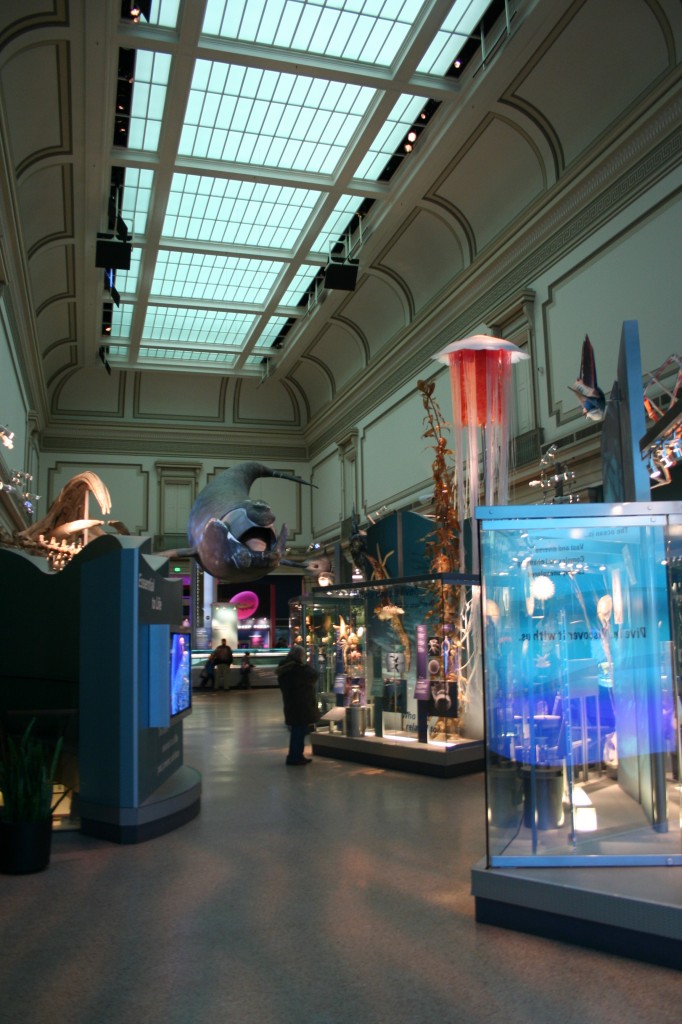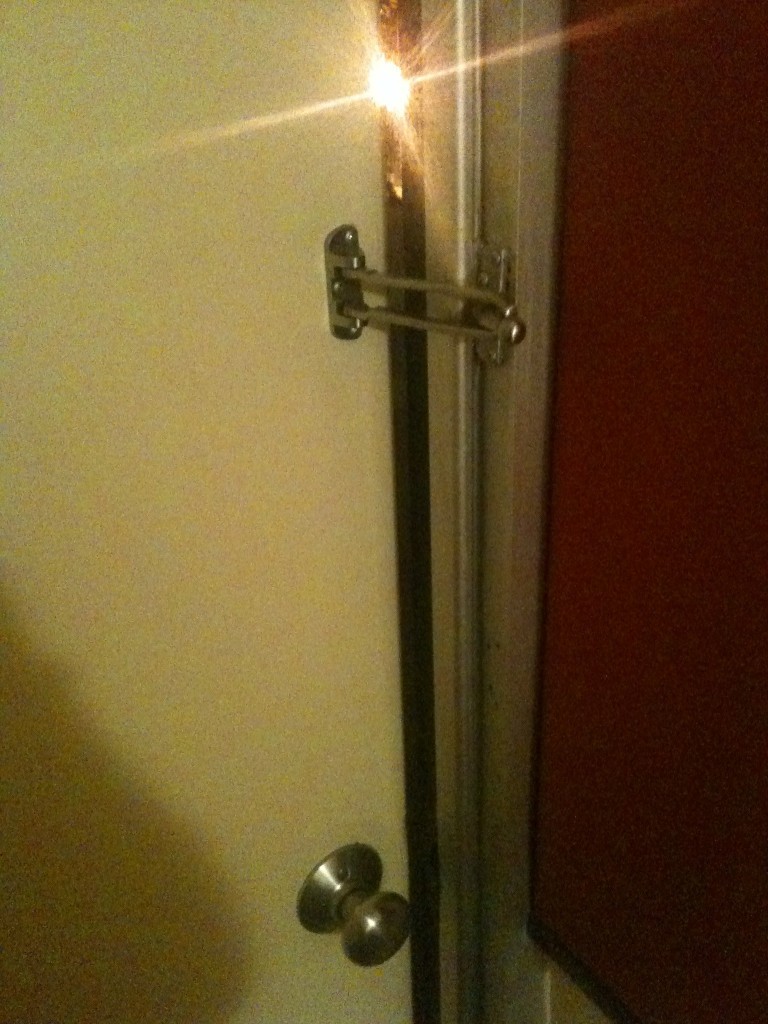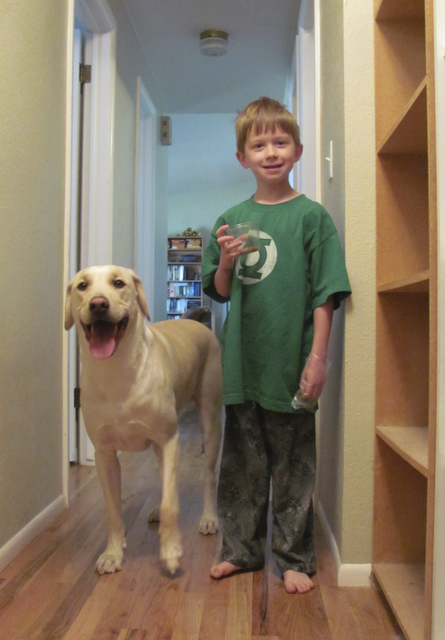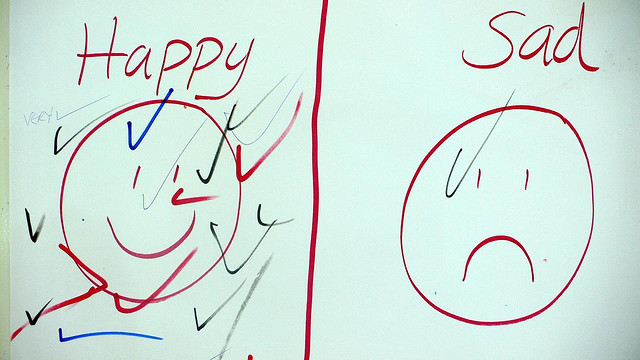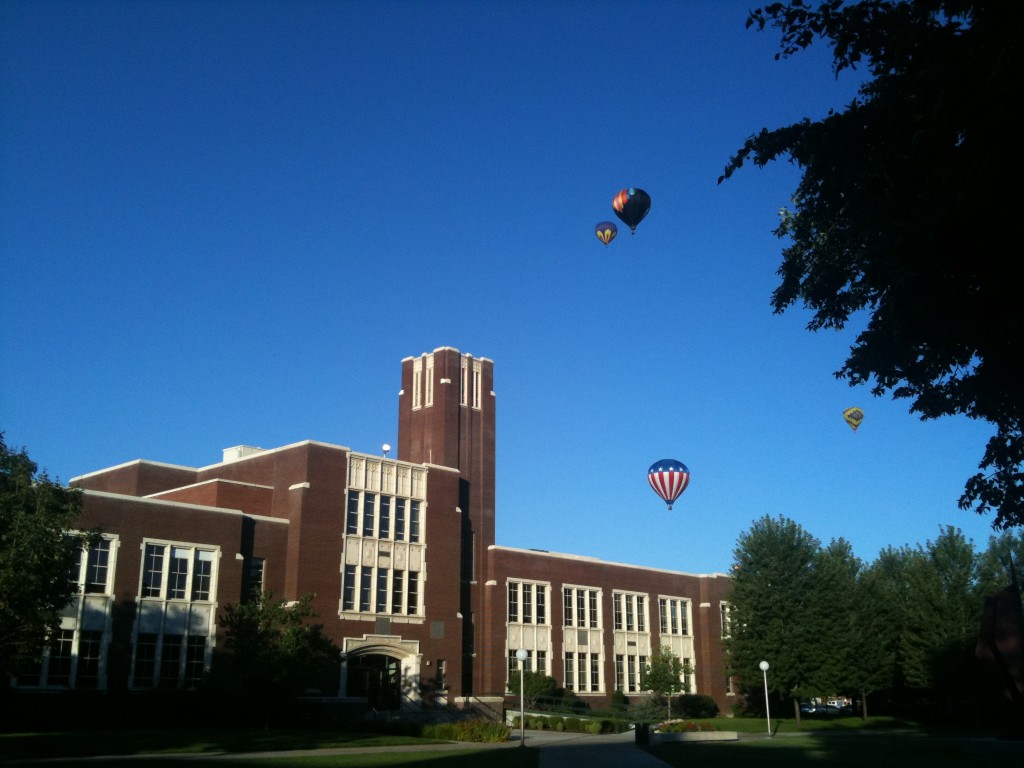This calls for an illustration:
As I’ve mentioned, nearly three weeks ago I decided to go sugar-free and vegan. As you can see from the “before” and “after” photos, the new diet is really working for me. I feel awesome.
I posted this image on Facebook and received several questions in the comments and via private messages about what I’m eating and how I’m negotiating this with family meals, and I thought I’d explain here.
First, Fang and Lucas aren’t vegan, nor are they vegetarian or sugar-free. They’re continuing to eat in their own ways. Fang lost a lot of weight over the last year by moving to eating more raw, whole foods–mostly fruits–and Lucas likes his milk, meat, fruits, veggies, and carbs. I’m not going to mess with what works for them.
We eat meals together as a family, but even before I went vegan and sugar-free, none of us was eating exactly the same meal–and Fang doesn’t really do dinner anyway; he prefers to have a piece of fruit. I’m already used to fixing Lucas and me slightly different entrées, so the switch wasn’t that big a deal in terms of meal prep. As a 21-year vegetarian, I also was accustomed to eating around the edges when we have guests, so when we recently had folks over for dinner, I fixed chicken parmesan, breaded eggplant, a vegan green salad, asparagus, and bread. I ate everything but the chicken and still had a nutritious meal.
While I enjoy cooking occasionally for guests, for the most part I prepare very simple meals. Most of our meals were, and continue to be, cooked on the stovetop: simple stir-fry dishes, pasta, and steamed veggies are the norm. Instead of preparing cheese ravioli and asparagus for a simple typical dinner, I now fix whole-wheat pasta (or, on special occasions, the pricey vegan butternut squash ravioli from the fancy natural market that recently opened in town). I make sure the pasta doesn’t have any egg in it, and I don’t add parmesan; if I use marinara from a jar, I make sure to get a variety without added sugar. Otherwise, everything is pretty much the same.
The switch has also meant that I take my lunch to work more often than I was before. I’ll take a couple pieces of fruit, some carrots or bell pepper slices, maybe some nuts, and water. If I’m still hungry after eating fruits and veggies, I go buy a bagel, and sometimes I bring from home a chunk of very whole-grain bread (the kind with pumpkin seeds–yum!). This means I’m eating dramatically less fat, as the things I was buying on campus tended to be pretty loaded with cheese.
Lots of folks have asked me about calcium and protein. I’m taking a calcium supplement, just to be safe, but many of the foods I eat have calcium or are calcium-fortified, so I’m not worried about it too much. Similarly, I can get all the protein I need from my diet. If you’re curious, here’s a chart showing where a vegan’s protein might come from on any given day, and here’s an article listing various sources of vitamins and minerals in a vegan diet. I’ve been taking a multivitamin each day for years, so I don’t worry too much about getting the exactly appropriate nutrients each and every day, as long as everything averages out over the week.
Giving up refined sugar also means I’m not eating any treats. If I want a treat, I eat a few vegan blue corn or sweet potato chips. Now that I haven’t had sugar or a lot of fat for weeks, my palate works differently, and I’m finding simple foods such as fruits and veggies–even the mediocre ones found here in the country’s most isolated city of its size–to be more flavorful and enjoyable.
It has been difficult to find some things without added sugar, so I have had to compromise a bit. For example, I’ve been using soy milk for years, and I’ve tried different kinds of it in my cereal, and the unsweetened varieties just don’t do it for me, so the one I use contains evaporated cane juice. I like almond milk, but it doesn’t have as much protein as soy milk, so I’m sticking with soy for the most part. I like raspberries in my cereal, but fresh raspberries aren’t available year-round and they tend to be pricey here, so I use frozen raspberries, and I can’t find any locally that are sugar-free. As you might imagine, breakfast is the sweetest part of my day. I have switched from cereal with sugar to a couple different kinds of shredded wheat cereals that have only one ingredient—wheat—plus a preservative.
I craved sugar for the first two weeks, but now I’m fine. I don’t miss the dairy at all.
Although I’m committed to this diet for now–I have so much more energy, my skin feels both softer and more elastic, and I’ve lost a significant (for me) amount of weight (as well as two pants sizes)–I’d be depressed if I said I will never have another slice of cheesecake, cake, or fruit crisp. Accordingly, I’m taking things one day at a time.
Now that the semester is winding down and I should have a little more leisure time, I’m also recommitting to an exercise regimen. Trying to tame an out-of-control garden and yard is already helping me to feel more fit.
If you have any other questions, feel free to leave ’em in the comments. I’m still feeling my way around this new diet, but I’m happy to share what’s working for me because I really do feel great.

